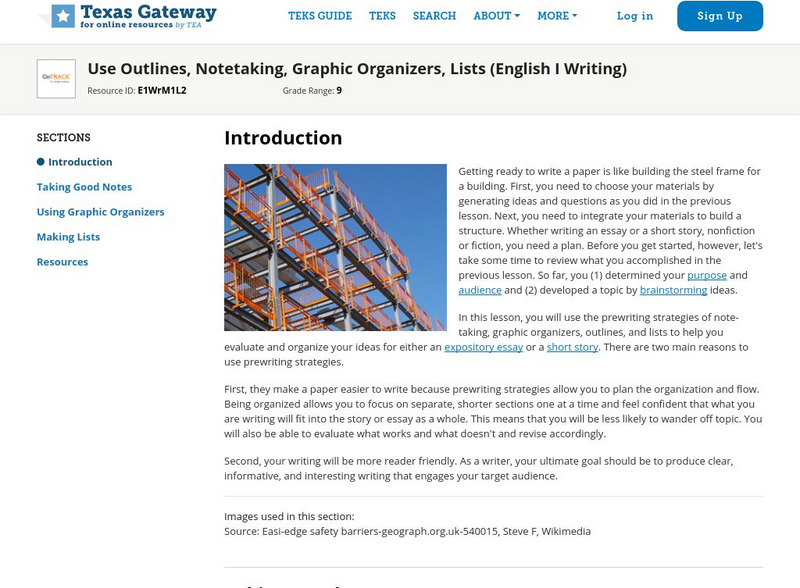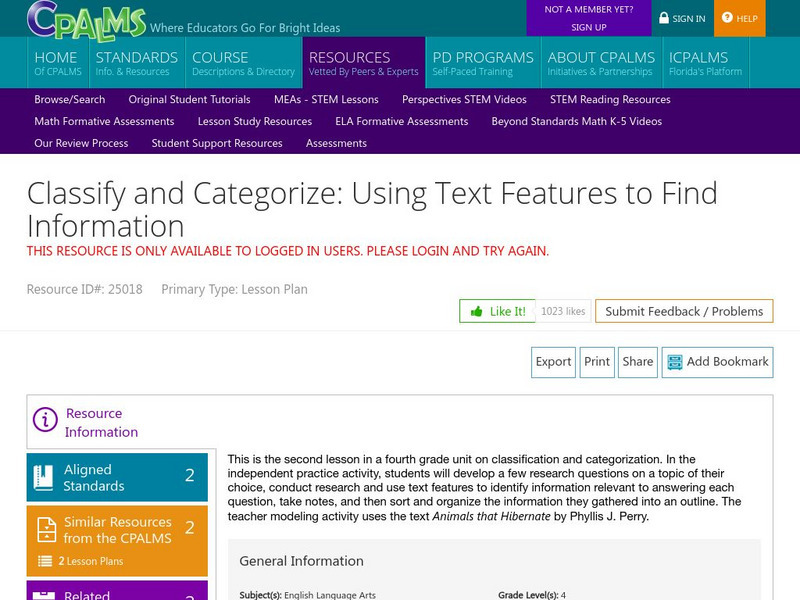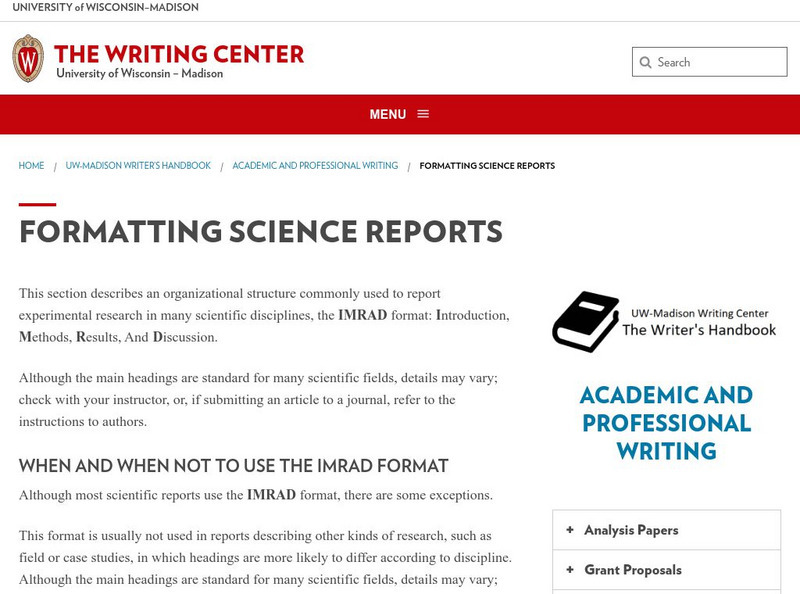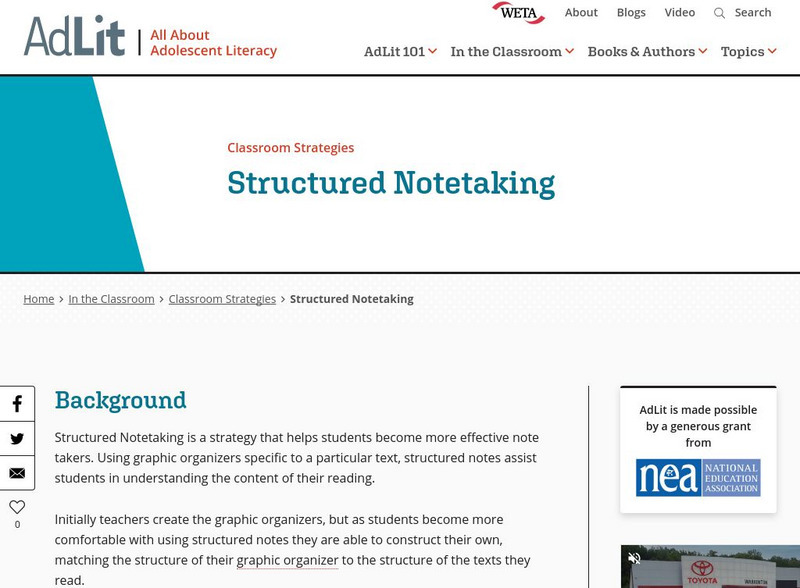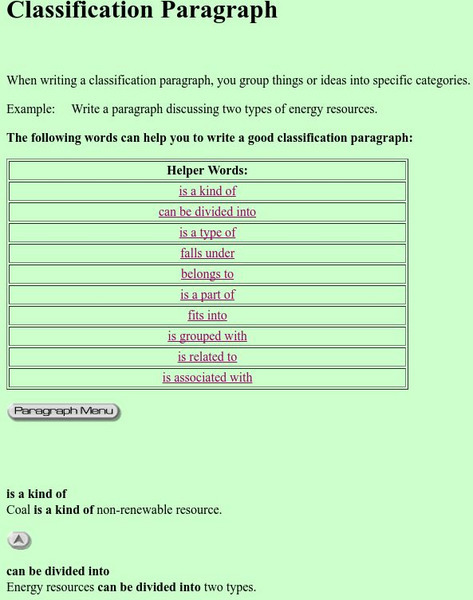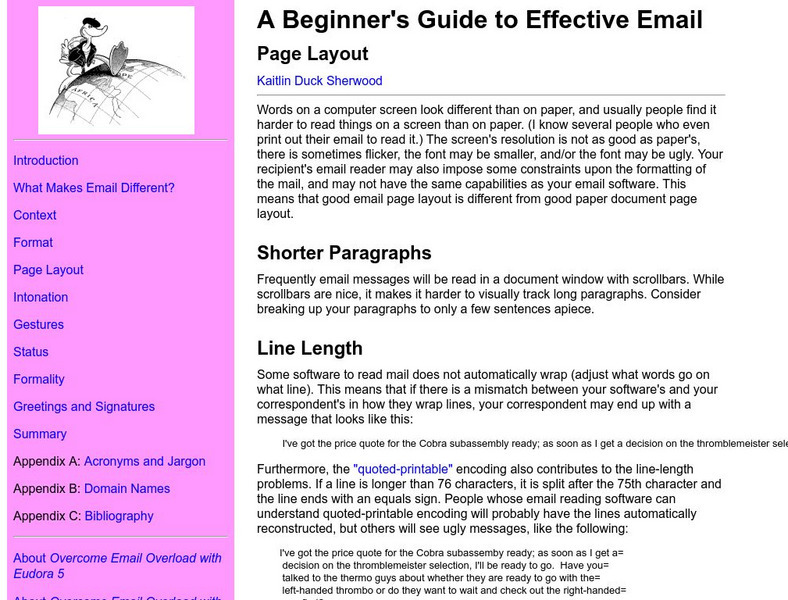Other
Livingston: Basic Guide to Essay Writing
This tutorial lists and discusses the steps to writing a good essay and provides a downloadable guide. It also allows you to view a sample essay. W.11-12.2a Intro/Format
Grammarly
Grammarly Handbook: Main Ideas and Supporting Ideas
An explanation and examples of main ideas and supporting details.
Texas Education Agency
Texas Gateway: Use Outlines, Notetaking, Graphic Organizers, Lists
Learn how to use outlines, notes, graphic organizers, and lists to help you evaluate and organize your ideas.
Lumen Learning
Lumen: Boundless Communications: Principles of Organization
This lesson focuses on the importance of organizing your speech including critically thinking about the contents of the speech, the components of the speech, the patterns of organization to fit the different types of speeches, and...
University of Toronto (Canada)
University of Toronto: Engineering Communication Program: Memos
This site shows exactly how to write a memo. The site talks about the components to use: header, purpose, summary, discussion, action.
CPALMS
Cpalms: Classify and Categorize: Using Text Features to Find Information
[Free Registration/Login Required] Students will develop research questions, classify information into an outline form, and use the features of nonfiction writing to identify information relevant to a research question.
University of North Carolina
University of North Carolina: The Writing Center: Scientific Reports
A handout exploring how to complete a scientific report based on scientific research. The site describes the sections needed as well as how to insert graphs and tables.
Texas Education Agency
Texas Gateway: Make Inferences in Informational/expository Text
[Accessible by TX Educators. Free Registration/Login Required] In this lesson, you will be taking a look at how authors of informational texts, such as expository texts, organize their writing and the effects that organization can have...
University of Wisconsin
University of Wisconsin: Writing Center: Formatting Science Reports
This site outlines the necessary elements of a scientific report. The site is broken down into the follow segments: title, abstract, introduction, methods, results, and discussion. Within each section is a contents section as well as a...
Online Writing Lab at Purdue University
Purdue University Owl: High Order Concerns (Ho Cs) for Business Writing
A great reference when writing business messages or letters. Discusses the most important issues involved in business writing and an organizational system for them.
Online Writing Lab at Purdue University
Purdue University Owl: Parallel Structure in Professional Writing
A good reference to consider when writing professionally (as in business/technical writing). Includes brief structural examples.
Other
Tidewater Community College: Writing Center: Organizing Paragraphs and Essays
This page gives a quick, but thorough look at a few good ways to organize a piece of writing.
Alabama Learning Exchange
Alex: Introduction to Database Management
This lesson introduces students to the concept of organized information in a database. This is an introduction, so there are no computer exercises. A PowerPoint presentation is used as a visual aid for discussion and explanation....
Alabama Learning Exchange
Alex: Do You Know How?
Students will write in a technical genre. "Technical writing conveys specific information about a technical subject to a specific audience for a specific purpose. The words and graphics of technical writing are meant to be practical:...
AdLit
Ad lit.org: Classroom Strategies: Structured Notetaking
Structured Notetaking is a strategy that helps students become more effective note takers. Using graphic organizers specific to a particular text, structured notes assist students in understanding the content of their reading.
ACT360 Media
Writing Den: Classification Paragraphs
These tips and phrases can help you create a classification paragraph.
Other
Webfoot.com: A Beginner's Guide to Effective Email Page Layout
This website focuses on page layout and more specifically the length of paragraphs and lines as found in emails.
Sophia Learning
Sophia: Cause and Effect Papers: Lesson 2
This lesson introduces cause and effect papers. It is 2 of 2 in the series titled "Cause and Effect Papers."
Sophia Learning
Sophia: Classification and Division Papers: Organization
This lesson discusses structuring an outline for a classification paper.
Sophia Learning
Sophia: Argumentative Papers: Key Elements: Lesson 2
This lesson goes over words, phrases, and key elements that are included in argumentative papers. It is 2 of 2 in the series titled "Argumentative Papers: Key Elements."
Sophia Learning
Sophia: Compare and Contrast Papers: Organization
This lesson discusses structuring an outline for a comparison contrast paper.
Sophia Learning
Sophia: Comparison Papers: Key Elements
This lesson goes over words, phrases, and key elements that are included in comparison contrast papers.
Sophia Learning
Sophia: Comparison Papers: Thesis: Lesson 2
This lesson discusses selecting a thesis for a comparison contrast paper. It is 2 of 2 in the series titled "Comparison Papers: Thesis."
Sophia Learning
Sophia: Revising an Introduction: Lesson 2
This lesson discusses improve an introduction through revision. It is 2 of 2 in the series titled "Revising an Introduction."




